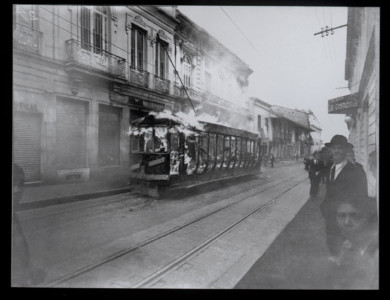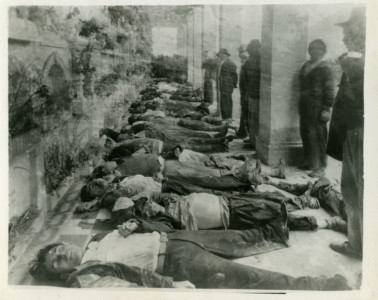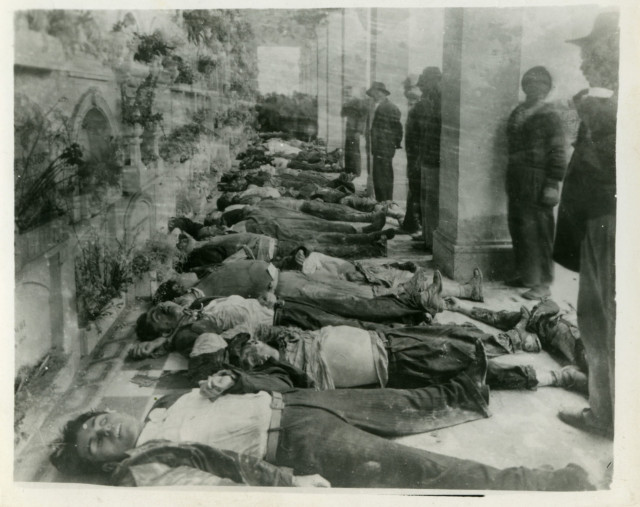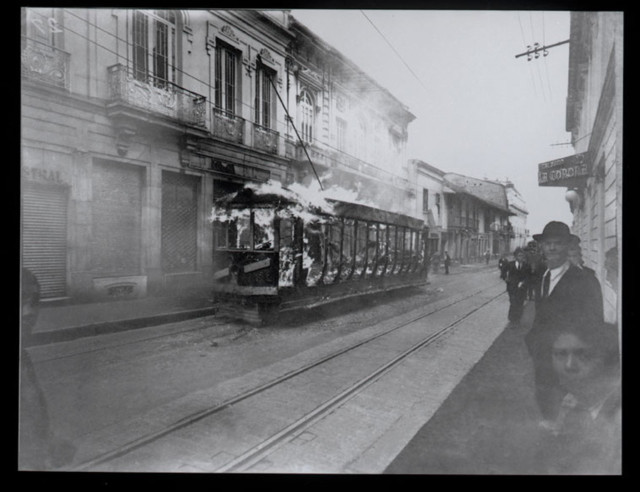Part of the CGTN special series Rediscovering the New World
Colombia’s bustling capital, Bogotá, went up in flames in 1948. In 24 hours the central cemetery was filled with the dead. Some statistics say as many as 3,000 people lost their lives. This is what is known popularly as the “Bogotazo.”
CGTN’s Michelle Begue reports.
To understand this event we must understand the life of one Colombian man — Bogotá’s mayor, Jorge Eliécer Gaitán. Gaitán was one of the most charismatic political leaders in Colombia’s history.
Adored by the working class, thousands filled the streets to hear his speeches in the 1940s. He spoke of land reform and moderate nationalism. He rejected the oligarchy and fought for minorities—workers and farmers who had no voice in Colombia. At the core of his beliefs was the call for a gradual and peaceful change that would bring balance between Colombia’s classes.
Carlos Medina Gallego, Director of Political Science in the Colombian National University explained, “First that there shouldn’t be hatred between conservatives and liberals and that the interests of the nation should be put above party interests.”
Gaitán – a presidential hopeful for the 1950 elections – was shot dead on April 9th 1948. His alleged killer was quickly caught and killed by the enraged mob—as he ran from the crime scene. For the next 10 hours—riots. Buildings were destroyed and thousands killed.
We asked Carlos Medina why there was such a violent reaction to his death. “First,it is an expression of impotence, anger, and sentiments of vengeance that come from the popular sectors – and the Gaitán masses – for their charismatic leader. It is the pain accumulated, the helplessness of a shattered collective hope that was spurred by a charismatic leader who was able to move the popular sectors,” he explained.
The Bogotazo marked the beginning of a brutal decade of violence known as “La Violencia.” The rural conflict between conservative and liberal parties left 200,000 dead in just 10 years. Medina added, “that violence of Gaitan’s death later extended to different parts of the country where the thoughts of Gaitán were important—and a resistance began against the conservative government by liberal guerillas that began to concentrate in certain parts of the country. These were the origins of the new armed movement that opposed the political violence.”
It was this political violence and exclusion that helped trigger Colombia’s armed conflict.
In 1964, Manuel Marulanda – a militant in a Liberal militia – aligned himself with the Communist party to create one of Latin America’s oldest insurgent groups—FARC.
Gaitán’s daughter, Gloria, said her mother always warned that Gaitan’s socialist ideals would create powerful enemies in the ruling conservative classes. She said, “my mother always told him that they would never allow him to reach power, they will kill you as they are killing your followers. But my father responded: ‘I will never be killed, because the oligarchy knows that this country will revolt and it will take infinite years before this country will return to normalcy.”
It has been 70 years since Gaitán’s death. Close to a half-million Colombians have died trying to achieve his ideals of equality, peace, and unity. And, even after the peace agreement between the Colombian government and the largest insurgent group FARC—the deaths continue. One International Non-governmental Agency reports 22 social activists died in January of 2018 alone. Every other day, trade unionists, land activists or human rights defenders are killed.
Gloria Gaitan said “Colombia is a country of assassinations from the left and the right.”
Since 2011 the Colombian government has declared the day of Gaitán’s death, April 9th, as the National day for Memory and Solidarity with the victims of the armed conflict.
Gloria disagrees; “I think it is terrible! It should be the day of our heroes! It is a people that rose up after losing hope. The death of Gaitán was an attempt to stop the rise of the people to power.”
Photo Gallery


 CGTN America
CGTN America Citizens pick up after the Bogota riots. (PHOTO COURTESY/Bogota Archives)
Citizens pick up after the Bogota riots. (PHOTO COURTESY/Bogota Archives)












